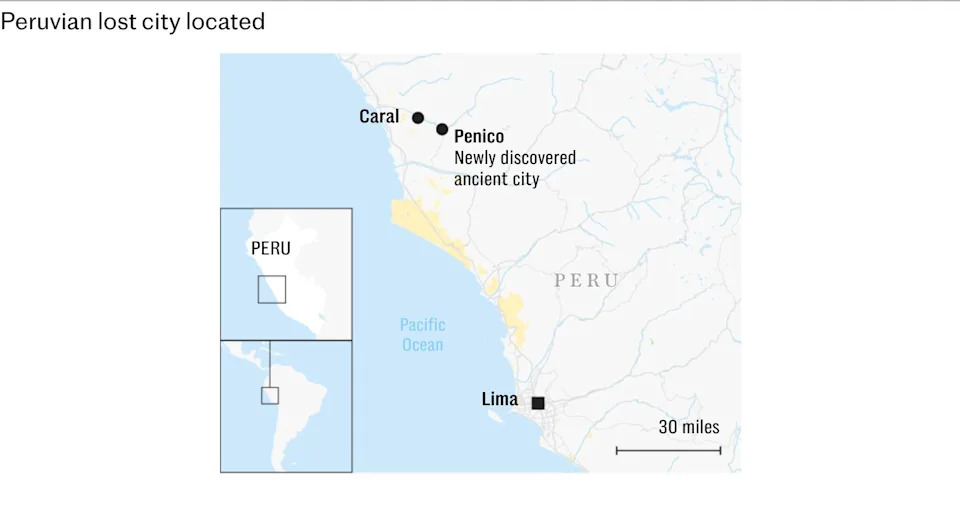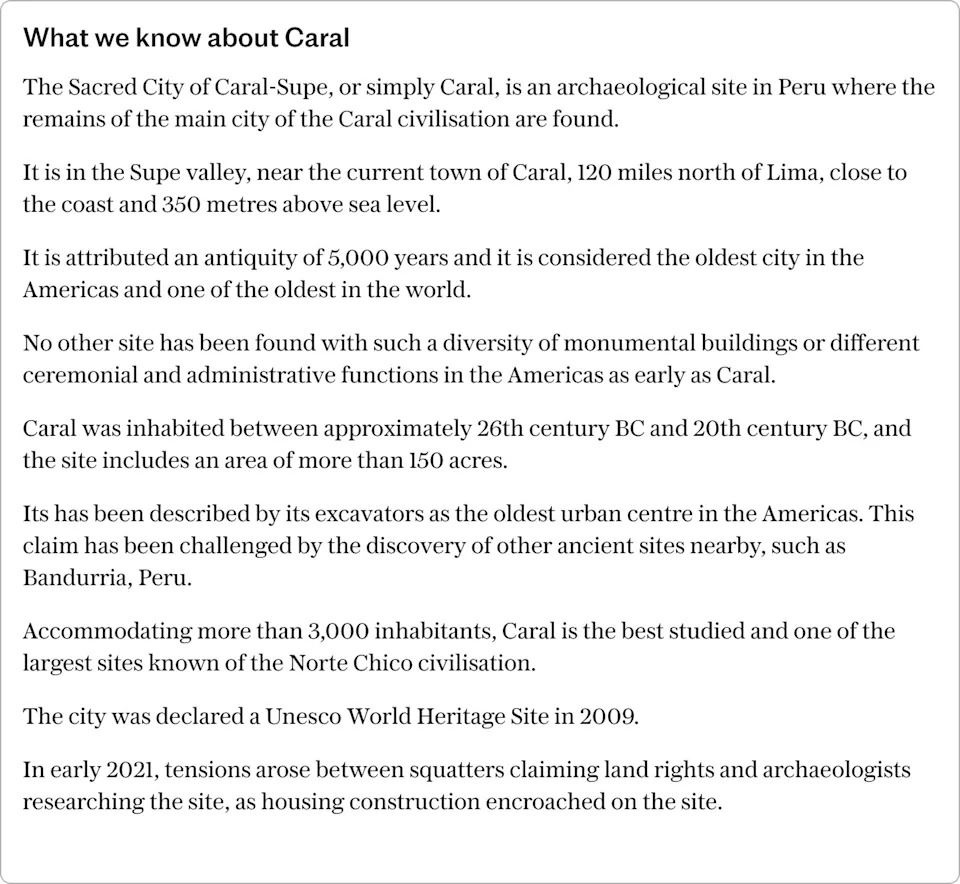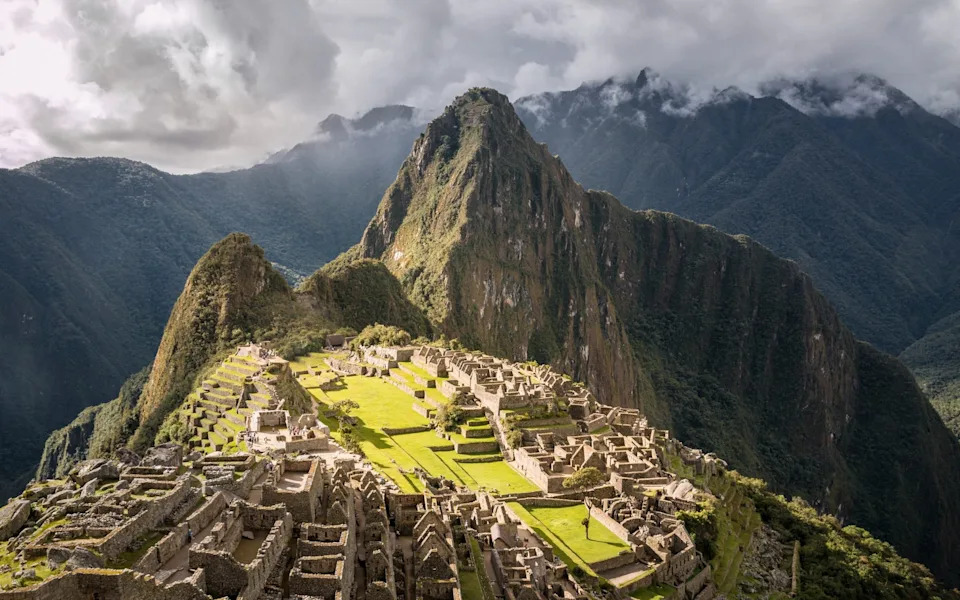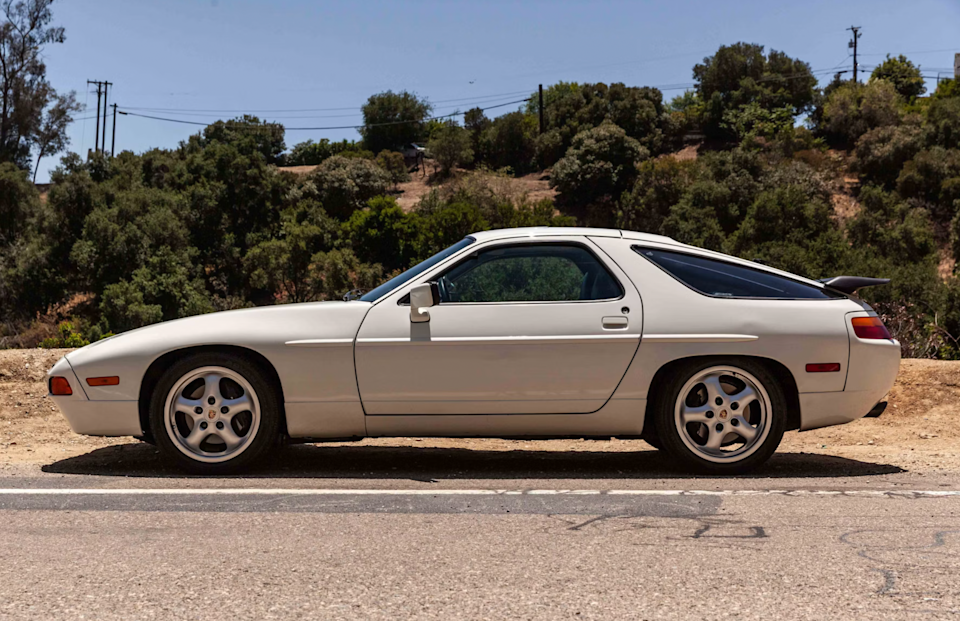Archaeologists have discovered a city in Peru thought to be about 3,500 years old.
The city, called Penico, is likely to have served as a trading post linking early Pacific coast communities with those living in the Andes mountains and Amazon basin.
Located around 200 miles north of Lima in the country’s Barranca province, the urban centre sits on a hillside around 1,970ft above sea level and is believed to have been founded between 1,800 and 1,500BC – around the same time as early civilisations flourished in the Middle East and Asia.
Drone footage of the site taken by researchers shows a circular structure on a hillside terrace at the city’s centre, surrounded by the remains of stone and mud buildings.
The site bears a striking resemblance to the ancient city of Caral, the oldest civilisation in the Americas, 17 miles to the west.
Scientists believe the city may have been formed after Caral collapsed as a result of climate change.

Having emerged around 5,000 years ago, Caral is considered a contemporary of civilisations in Egypt, India, Sumeria and China. Yet unlike them, it developed in complete isolation, according to researchers.
Caral’s two sunken circular courts are believed to have served as ceremonial spaces for gatherings and rituals.
Ruth Shady, the archaeologist who led the research into Penico and the excavation of Caral in the 1990s, said the newly unveiled city is especially important for understanding what became of the Caral civilisation after it was devastated by environmental changes..
“They were situated in a strategic location for trade, for exchange with societies from the coast, the highlands and the jungle,” Ms Shady said.

Marco Machacuay, an archaeologist and researcher with Peru’s ministry of culture, said that Penico’s importance lies in it being the continuation of the Caral society, which fell into decline around 1,800BC, possibly because of drought and flooding.
After eight years of research, archaeologists have identified up to 18 structures in Penico, including ceremonial temples, residential complexes and murals.
The walls of a central plaza stand out for their sculptural reliefs and depictions of the pututu, a conch shell trumpet used in religious ceremonies whose sound carries over long distances.These are believed to have been symbols of power and authority in Penico society.
In other buildings, researchers found human remains, clay sculptures of human and animal figures, ceremonial objects and necklaces made from beads and seashells.
The combination of artefacts from the site blend influences from the coast, the mountains and the jungle, leading archaeologists to conclude that the city was a nexus for trade in the region.
Yoshio Cano, a spokesman for the Caral Archaeological Zone, told local media: “Evidence has been found of a great deal of trade not only in the Supe Valley, but also with the Huaura Valley, because it is located in a very strategic place in the Supe Valley (...) And, in addition, evidence has been found of integration also with the mountain and jungle areas, and over long distances.”
Penico officially opened its doors for tourists to visit the ancient city on July 3.
As part of the project, ceremonial spaces within the city have been digitally reconstructed to enable visitors to see what the city would have looked like in its prime.
 The Machu Picchu citadel is one of the most famous treasured sites in Peru - Pintai Suchachaisri/Getty
The Machu Picchu citadel is one of the most famous treasured sites in Peru - Pintai Suchachaisri/GettyPeru is home to many of America’s most significant archaeological discoveries, including the Inca ruins of Machu Picchu and the mysterious Nazca lines, located in a desert region along the country’s central coast.
The Machu Picchu mountain citadel was built by the Inca empire around the time of the 15th century, hundreds of years after Penico flourished as a city.
Meanwhile, the Nazca Lines, a series of images etched into the ground resembling animals, are thought to date to between 200BC and 500AD.
Broaden your horizons with award-winning British journalism. Try The Telegraph free for 1 month with unlimited access to our award-winning website, exclusive app, money-saving offers and more.














